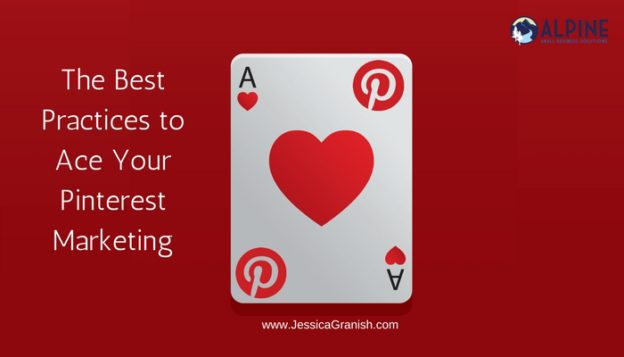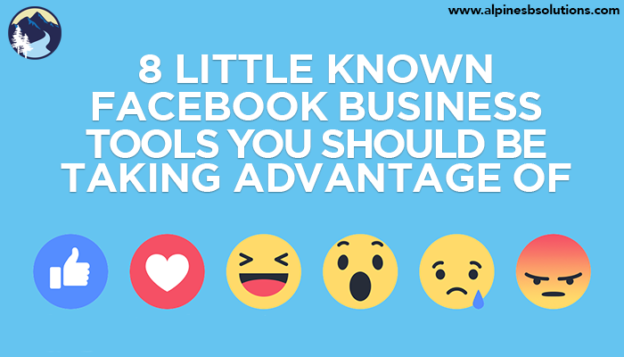When you want to market a new product, there are two approaches you can take: a soft launch or a hard launch. Each one offers unique benefits, and each one can be a great approach depending on the product, organization, and marketing goals. Understanding the differences between the marketing approaches allows you to be informed to choose the best fit for you given marketing strategy.
Soft Launch
 A soft launch is a marketing effort that intentionally limits its scope to a smaller percentage of the target audience. The goal is to test the product among the small audience and tweak it as necessary before the product is available to everyone. The audience can be a small group within your target audience or a small group whose demographics are similar to your target audience (such as product testing in Canada, New Zealand, or Australia).
A soft launch is a marketing effort that intentionally limits its scope to a smaller percentage of the target audience. The goal is to test the product among the small audience and tweak it as necessary before the product is available to everyone. The audience can be a small group within your target audience or a small group whose demographics are similar to your target audience (such as product testing in Canada, New Zealand, or Australia).
Hard Launch
A hard launch is a full force marketing effort that aims to reach your entire target audience. The goal is to persuade as many people as possible to try (and, if relevant, purchase) your product.
Differences Between a Soft Launch and a Hard Launch
1. The main focus: The purpose of a soft launch is to gather data to improve the product before  it’s released to everyone. Staff members can really focus on finding changes that need to be made because they won’t be spending as much time focused on various marketing efforts. This is really still a testing phase. It allows you to work out some of the kinks before you go big!
it’s released to everyone. Staff members can really focus on finding changes that need to be made because they won’t be spending as much time focused on various marketing efforts. This is really still a testing phase. It allows you to work out some of the kinks before you go big!
The purpose of a hard launch is to spread awareness of the product to as many people as possible, ideally resulting in their trying and purchasing the product. While sales conversions are great benefits to reap during a soft launch, they are not the main focus.
2. Amount of time Since a soft launch is primarily focused on testing the product on a smaller scale, in the short term, it will take less time to complete than a hard launch targeting a larger audience. Usually a few weeks is all it takes to gather the data necessary from a soft launch.
 An effective campaign for a hard launch, in contrast, could take several weeks or even months. On the flip side, the amount of time it takes to see results comes in much quicker with a hard launch due to the expanded marketing efforts. Of course, in the long run, a soft launch does take longer because it’s followed by a hard launch. But when comparing a soft launch to a hard launch, a soft launch is much shorter.
An effective campaign for a hard launch, in contrast, could take several weeks or even months. On the flip side, the amount of time it takes to see results comes in much quicker with a hard launch due to the expanded marketing efforts. Of course, in the long run, a soft launch does take longer because it’s followed by a hard launch. But when comparing a soft launch to a hard launch, a soft launch is much shorter.
3. Amount of money: The amount of marketing funds needed for a soft launch is naturally less than the marketing funds needed for a hard launch due to the smaller audience. On the flip side, the amount of money gained is naturally higher in a hard launch due to the expanded marketing efforts. The effectiveness of money spent can be high in either marketing strategy. With a soft launch you may gain valuable insight on necessary changes, making the product more appealing once you do a hard launch which can translate into more sales. With a hard launch, you are maximizing the effectiveness of a marketing campaign by promoting across various strategies and various geographic areas.
4. Ease of making changes: While you can make changes to your product with either launch, changes are easier to make in a soft launch for two reasons. First, your primary focus during a soft launch is to find changes that need to be made (in contrast to the primary focus during a hard launch, which is to effectively reach as many people in your target audience as possible). Second, with a soft launch you can make changes before the majority of your target audience sees the product. You won’t need to spend marketing resources informing audiences of the changes like you would if you made the changes after a hard launch.
Which one should you use?
 Different marketing needs will call for different strategies. For newer products, you will likely want to do a soft launch. This will allow you to gather valuable information on your target audience to better tailor the marketing efforts when you introduce the product. For products you are less confident in, a soft launch also works well. You’ll gain confidence after seeing how the product performed in the smaller audience and know you made the changes needed for it to be ready for a full audience launch. For a product that will be launched in a more competitive market, a hard launch will be better since it allows for a wide marketing effort.
Different marketing needs will call for different strategies. For newer products, you will likely want to do a soft launch. This will allow you to gather valuable information on your target audience to better tailor the marketing efforts when you introduce the product. For products you are less confident in, a soft launch also works well. You’ll gain confidence after seeing how the product performed in the smaller audience and know you made the changes needed for it to be ready for a full audience launch. For a product that will be launched in a more competitive market, a hard launch will be better since it allows for a wide marketing effort.
If you want to utilize either a hard launch or a soft launch, Alpine Small Business Solutions can help! We are ready to help you with any aspect of business building, simply call or email us and we will help you implement a marketing strategy.




 Ensure your website is mobile friendly. Busy shoppers purchase on their phone. A difficult to use app will lose you customers faster than people lose their diet resolutions at the company holiday party. Plug your url into
Ensure your website is mobile friendly. Busy shoppers purchase on their phone. A difficult to use app will lose you customers faster than people lose their diet resolutions at the company holiday party. Plug your url into  Pick a season’s greetings. Some audiences are offended with the use of “Merry Christmas” while others are equally offended by the lack of “Merry Christmas.” Know which greetings best suit your brand and your target audience. “Happy Holidays” is a safe bet since it recognizes the numerous celebrations.
Pick a season’s greetings. Some audiences are offended with the use of “Merry Christmas” while others are equally offended by the lack of “Merry Christmas.” Know which greetings best suit your brand and your target audience. “Happy Holidays” is a safe bet since it recognizes the numerous celebrations. Santa. An art supply store can organize a holiday card decorating workshop. Any store can throw a holiday party with a tree lighting and carol singing. Make a fun event, ideally connected to your business, to draw people to your store. They’ll be reminded of your great selection, which hopefully will get them thinking about crossing items off their shopping list with your products.
Santa. An art supply store can organize a holiday card decorating workshop. Any store can throw a holiday party with a tree lighting and carol singing. Make a fun event, ideally connected to your business, to draw people to your store. They’ll be reminded of your great selection, which hopefully will get them thinking about crossing items off their shopping list with your products.

 Strategic keyword integration helps optimize your pins. Scatter keywords throughout the image file names, pin descriptions, board names, and board descriptions.
Strategic keyword integration helps optimize your pins. Scatter keywords throughout the image file names, pin descriptions, board names, and board descriptions. Skip the highly promotional “buy this item” pins. These won’t perform well since using sales-y words like buy and sale anger the algorithm.
Skip the highly promotional “buy this item” pins. These won’t perform well since using sales-y words like buy and sale anger the algorithm. Pinterest requires you to “feed the beast.” The algorithm rewards consistency. It’s better to regularly pin rather than go on a one hour straight pinning spree. Aim for between
Pinterest requires you to “feed the beast.” The algorithm rewards consistency. It’s better to regularly pin rather than go on a one hour straight pinning spree. Aim for between
 Bear Grylls is a well-known adventurer, writer, and TV personality. In his show “Running Wild with Bear Grylls” he takes a new celebrity on an adventure, encountering
Bear Grylls is a well-known adventurer, writer, and TV personality. In his show “Running Wild with Bear Grylls” he takes a new celebrity on an adventure, encountering  Vince Lombardi is one of the greatest professional football coaches of all time, leading the Green Bay Packers to victory time and time again. You can get lost reading through a collection of his quotes, as each one is an inspirational landmine. When talking about coaching, he famously said “they call it coaching, but it is teaching. You do not just tell them…you show them the reasons.” Lombardi took the time to explain to his players the reasoning behind his choices and strategies, rather than simply yelling orders. This, arguably, helped improve the coach-player relationship, team cohesion, and the players’ motivation (especially when things got rough).
Vince Lombardi is one of the greatest professional football coaches of all time, leading the Green Bay Packers to victory time and time again. You can get lost reading through a collection of his quotes, as each one is an inspirational landmine. When talking about coaching, he famously said “they call it coaching, but it is teaching. You do not just tell them…you show them the reasons.” Lombardi took the time to explain to his players the reasoning behind his choices and strategies, rather than simply yelling orders. This, arguably, helped improve the coach-player relationship, team cohesion, and the players’ motivation (especially when things got rough). Miley Cyrus loves her fans so much that she has nicknamed them “Smilers” and makes sure to acknowledge them often, whether on tour or on
Miley Cyrus loves her fans so much that she has nicknamed them “Smilers” and makes sure to acknowledge them often, whether on tour or on  To say that the Kardashians have not been shy about exploiting their brands is like saying that fire is kind of hot. The Kardashian girls endorse clothing, makeup, perfume and more. What they know is that no business cycle lasts forever, so they are not shy about maximizing their potential while they can.
To say that the Kardashians have not been shy about exploiting their brands is like saying that fire is kind of hot. The Kardashian girls endorse clothing, makeup, perfume and more. What they know is that no business cycle lasts forever, so they are not shy about maximizing their potential while they can. Watching Geraldo Rivera bomb five tasks in a row was amusing and sad. Frankly, Geraldo’s ideas were good — 10 years ago, but did not resonate with company executives who were looking for forward thinking, innovative ideas that appeal to today’s consumers. Not to detract from his achievements, but Mr. Rivera thought that his past journalistic success would lead his team to winning each challenge; it did not. In fact, many younger people do not even know who he is. Geraldo is a forceful, strong-willed personality who does not take “no” for an answer. Maybe that’s the reason behind his success; however, when working with or leading a
Watching Geraldo Rivera bomb five tasks in a row was amusing and sad. Frankly, Geraldo’s ideas were good — 10 years ago, but did not resonate with company executives who were looking for forward thinking, innovative ideas that appeal to today’s consumers. Not to detract from his achievements, but Mr. Rivera thought that his past journalistic success would lead his team to winning each challenge; it did not. In fact, many younger people do not even know who he is. Geraldo is a forceful, strong-willed personality who does not take “no” for an answer. Maybe that’s the reason behind his success; however, when working with or leading a 
 A few decades ago, few people would have predicted that one of the top media companies in the US owns very little physical inventory or that one of the top taxi services owns no vehicles. But the founders of Netflix and Uber forever changed their industries with their creative thinking.
A few decades ago, few people would have predicted that one of the top media companies in the US owns very little physical inventory or that one of the top taxi services owns no vehicles. But the founders of Netflix and Uber forever changed their industries with their creative thinking. True. Entrepreneurs who overwork themselves and fail to regularly practice self-care end up prematurely aging. Just like people in other lines of work with those same poor habits prematurely age.
True. Entrepreneurs who overwork themselves and fail to regularly practice self-care end up prematurely aging. Just like people in other lines of work with those same poor habits prematurely age.
 Organization is a business owner’s best friend. It’s all too easy to stockpile a mishmash of files and documents scattered all over your computer and desk. Find a system that works for you and, once and for all, implement it. The few hours or days it takes to really organize everything will save you so much time down the road.
Organization is a business owner’s best friend. It’s all too easy to stockpile a mishmash of files and documents scattered all over your computer and desk. Find a system that works for you and, once and for all, implement it. The few hours or days it takes to really organize everything will save you so much time down the road. The advantage of new tools is they can save you time and revolutionize how you do business. The disadvantage of new tools is they often take time to research, test out, and make a decision to implement or not. When your business is busy, you struggle justifying the time it takes to try out different options.
The advantage of new tools is they can save you time and revolutionize how you do business. The disadvantage of new tools is they often take time to research, test out, and make a decision to implement or not. When your business is busy, you struggle justifying the time it takes to try out different options.
 My affair with laptops has not been a smooth road. I have gone through four laptop computers in the course of a year and a few months. I wasn’t careless or doing anything really cool, it has simply been a matter of unfortunate luck. Now let me make this clear, all you Mac and PC lovers, this is not a duel of which is better because it has happened on both systems and each time it equally sucked. On the up side though, through my own trial and error, I have learned enough to feel that I have good advice to give regarding protecting yourself from a computer hard drive crash. Despite the fact, I just yesterday, had yet another hard drive crash, I feel that I have learned from each instance including the most recent mishap and have goodness to share. This time my computer hard drive failure was due to an overheating issue. I lost a full days’ worth of work, but would I have not taken certain precautions I would have lost more than that, including my sanity.
My affair with laptops has not been a smooth road. I have gone through four laptop computers in the course of a year and a few months. I wasn’t careless or doing anything really cool, it has simply been a matter of unfortunate luck. Now let me make this clear, all you Mac and PC lovers, this is not a duel of which is better because it has happened on both systems and each time it equally sucked. On the up side though, through my own trial and error, I have learned enough to feel that I have good advice to give regarding protecting yourself from a computer hard drive crash. Despite the fact, I just yesterday, had yet another hard drive crash, I feel that I have learned from each instance including the most recent mishap and have goodness to share. This time my computer hard drive failure was due to an overheating issue. I lost a full days’ worth of work, but would I have not taken certain precautions I would have lost more than that, including my sanity. someone you love. This is not a quick process, but it is a MUST. A back up disc saves all your factory settings and system keys. If you are not sure how to do this on your computer, look it up in your computer manual or use good ol’
someone you love. This is not a quick process, but it is a MUST. A back up disc saves all your factory settings and system keys. If you are not sure how to do this on your computer, look it up in your computer manual or use good ol’  something similar, but I am a huge supporter of Dropbox and I think everyone should be using their service. Dropbox is free up to 2gb of storage and is super cheap for up to 50gb of storage. I cannot tell you how much Dropbox has saved my life when my computers crashed. If you are in business for yourself or are a student and you don’t have a system to load documents and images virtually this is an AWESOME and cheap solution.
something similar, but I am a huge supporter of Dropbox and I think everyone should be using their service. Dropbox is free up to 2gb of storage and is super cheap for up to 50gb of storage. I cannot tell you how much Dropbox has saved my life when my computers crashed. If you are in business for yourself or are a student and you don’t have a system to load documents and images virtually this is an AWESOME and cheap solution.  think, what if your computer crashes? You will lose all the bookmarked pages and information and all the invested time that you might have spent bookmarking them. I bookmark all kinds of great stuff all the way from songs I like to play on my mandolin, my scrabble dictionary, my favorite recipes, work related research and of course my favorite sites like
think, what if your computer crashes? You will lose all the bookmarked pages and information and all the invested time that you might have spent bookmarking them. I bookmark all kinds of great stuff all the way from songs I like to play on my mandolin, my scrabble dictionary, my favorite recipes, work related research and of course my favorite sites like  banged or shaken. In addition a Solid State Drive is nearly impossible to overheat unless it is being deliberately or accidentally heated through a source other than the computer itself. Bottom line is that the old traditional hard drives are MORE likely to fail and create stress than a Solid State. With no moving parts, the device has fewer opportunities to break down. The down side is they are a newer technology, are expensive and you will get less storage for more money, but I am telling you it is well worth the investment.
banged or shaken. In addition a Solid State Drive is nearly impossible to overheat unless it is being deliberately or accidentally heated through a source other than the computer itself. Bottom line is that the old traditional hard drives are MORE likely to fail and create stress than a Solid State. With no moving parts, the device has fewer opportunities to break down. The down side is they are a newer technology, are expensive and you will get less storage for more money, but I am telling you it is well worth the investment.


 A
A  Audience Insights is an intelligent tool that allows you to discover demographic, behavioral and social data on audiences before you ever target them with your ads. It’s a great method of gathering data and insight on your audience, and is easy to use. The insight on your audience can be used to improve your advertising and your content marketing. For an introduction to audience insights, check out our posts here:
Audience Insights is an intelligent tool that allows you to discover demographic, behavioral and social data on audiences before you ever target them with your ads. It’s a great method of gathering data and insight on your audience, and is easy to use. The insight on your audience can be used to improve your advertising and your content marketing. For an introduction to audience insights, check out our posts here:  If you manage more than one Facebook business page, you should consider Facebook business manager. It’s designed for easy managing of pages and advertising accounts. Working within the tool also gives you the option of keeping your business work separate from your personal page, since you will be accessing the page from within the business manager as opposed to from within your personal page. The tool allows users to post to the page, read messages, see notifications, check out insights, schedule posts, boost posts, and more. It’s free to use and requires a simple set up. If you work with a team, business manager also provides you the option of creating objectives and see which member is working on which project.
If you manage more than one Facebook business page, you should consider Facebook business manager. It’s designed for easy managing of pages and advertising accounts. Working within the tool also gives you the option of keeping your business work separate from your personal page, since you will be accessing the page from within the business manager as opposed to from within your personal page. The tool allows users to post to the page, read messages, see notifications, check out insights, schedule posts, boost posts, and more. It’s free to use and requires a simple set up. If you work with a team, business manager also provides you the option of creating objectives and see which member is working on which project.
 I have tried many task/project manager tools and Asana is hands down THE BEST. They have a free basic plan that works well for small teams, but depending on the features you are after and the tasks you encounter daily, one of the upgraded plan options may work better for your team.
I have tried many task/project manager tools and Asana is hands down THE BEST. They have a free basic plan that works well for small teams, but depending on the features you are after and the tasks you encounter daily, one of the upgraded plan options may work better for your team. Ever come up with an idea, but everyone’s’ calendars are already packed for the day? Plus, haven’t we established how much we all hate meetings? Slack is an amazing tool to help you stay in touch with your team, it’s a simple app without a lot of pizazz, but packs a punch in the productivity timeline.
Ever come up with an idea, but everyone’s’ calendars are already packed for the day? Plus, haven’t we established how much we all hate meetings? Slack is an amazing tool to help you stay in touch with your team, it’s a simple app without a lot of pizazz, but packs a punch in the productivity timeline. Running a special? Offering a new product or service? Whatever it may be, you can easily create targeted lead pages and track their results without redesigning your website. With over 160 plus free mobile-responsive templates, you can easily create multiple versions of pages to optimize your landing page success rate. Another great thing about Leadpages is that you can easily integrate it with over 40 tools and platforms!
Running a special? Offering a new product or service? Whatever it may be, you can easily create targeted lead pages and track their results without redesigning your website. With over 160 plus free mobile-responsive templates, you can easily create multiple versions of pages to optimize your landing page success rate. Another great thing about Leadpages is that you can easily integrate it with over 40 tools and platforms!